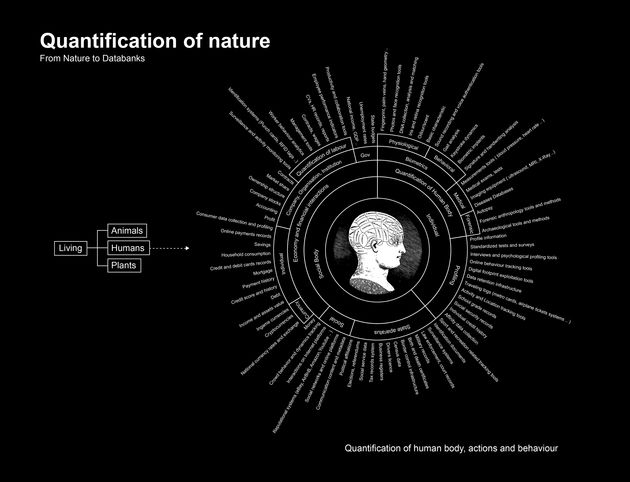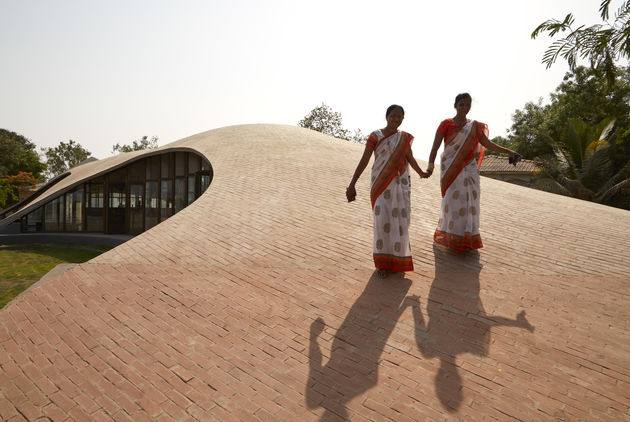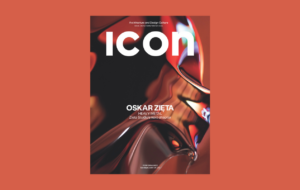![]() Detail of Anatomy of An AI System by Kate Crawford and Vladan Joler
Detail of Anatomy of An AI System by Kate Crawford and Vladan Joler
The Beazley Design of the Year awards show that design and technology are becoming increasingly entwined
For the second year running, the winner of the Beazley Design of the Year was a project that highlights the intersection between design and technology, highlighting the digital realm’s increasing influence in our everyday lives. The Anatomy of An AI System, designed by Kate Crawford, a researcher at the AI Now Institute, and Vladan Joler, co-founder of the SHARE foundation, is a visualisation of the creation and impact of an Amazon Alexa.
This year’s winner, also the winner of the digital category, is a black and white map that tracks the processes that go into creating and using an AI device, from the mining of metals to the data it gathers during use. Beginning at the start of the physical product’s creation, the chart looks at the extraction of materials and the impact on both the environment and the workforce, continuing through the human input required from the end user to get answers, exploring the data gathered and required to make an Alexa function.

The monochrome map clearly labels each section – mineral extraction, the human user and what happens to abandoned devices – and maps the complex paths required to get a simple answer from the device, such as ‘what’s the weather like today?’ Within the map, paths through Amazon’s data centres and the AI categorisations appear in the centre, with the beginning and end points ultimately ending with the earth and its resources.
Crawford has worked extensively on AI, its influence and its regulation, also having worked with artist Trevor Paglen on ImageNet Roulette, a project that showed the bizarre and often sinister ways AI categorises humans, and which Paglen turned into an exhibition at the Barbican titled From Apple to Anomaly.
 The Maya Somaiya Library by Sameep Padora and Associates has a roof people are encouraged to walk across. Photo by Edward Sumner
The Maya Somaiya Library by Sameep Padora and Associates has a roof people are encouraged to walk across. Photo by Edward Sumner
Paul Thompson, the chairman of the 2019 judges and vice-chancellor of the Royal College of Art, said of the project, ‘AI is such a prevailing feature of the future of technology it seemed the perfect moment to analyse its impact… In the future, when you purchase a piece of digital hardware, it could have the ingredients listed. This project… makes everyone who sees it think about all the unseen impact of tech hardware.’
This is the second year in a row that the winner of the top prize came from the digital category – last year’s winner, Forensic Architecture, won for their project visualising several investigations into a range of crimes that incorporated the work of journalists, architects and lawyers.
MySleeve was selected as a winner by Design Museum visitors
Other winners selected from the individual categories included Sameep Padora and Associates’ Maya Somaiya Library for a school in India in the architecture category, with its striking curved roof engineered so that people can walk across it, and in the people’s choice category, voted for by visitors to the Design Museum and its website, the winner was MySleeve, a soft covering designed by Marie Van den Broeck to make crutches more comfortable on a user’s hands.
Technological innovation was also central to the winners of several of the remaining categories, with Muji and Sensible 4’s GACHA self-driving bus winning in transport, and the low-cost HIV detector CATCH, designed by Hans Ramzan, winning the product category.
 Catch is a finger-sized device that can be used to test for HIV
Catch is a finger-sized device that can be used to test for HIV
The GACHA bus has already been tested in an elderly community in Finland, with plans to roll it out in 2020, enabling people who are less able to drive themselves to still travel around their neighbourhood. Ramzan, designer of the CATCH, told the Design Museum that he created the product because of the death toll resulting from untreated HIV and his desire to create a product that focused on ‘human survival’ rather than ‘human comfort’. So far, thousands of units have been requested and he is in the process of developing an appropriate distribution network for the potentially life-saving product.
While the function of such products – and the potential global impact – is central to their win, the designs of the year highlight the ways in which the often-unseen impact of technology can be made tangible and put at the heart of good design. Martino Gamper, one of the judges said of the winner, ‘This transparency here is incredible… It is honesty of materials applied to technology.’ Through a single image, Anatomy of An AI has made our everyday relationship with technology more comprehensible – making the unseen and invisible visible.
















